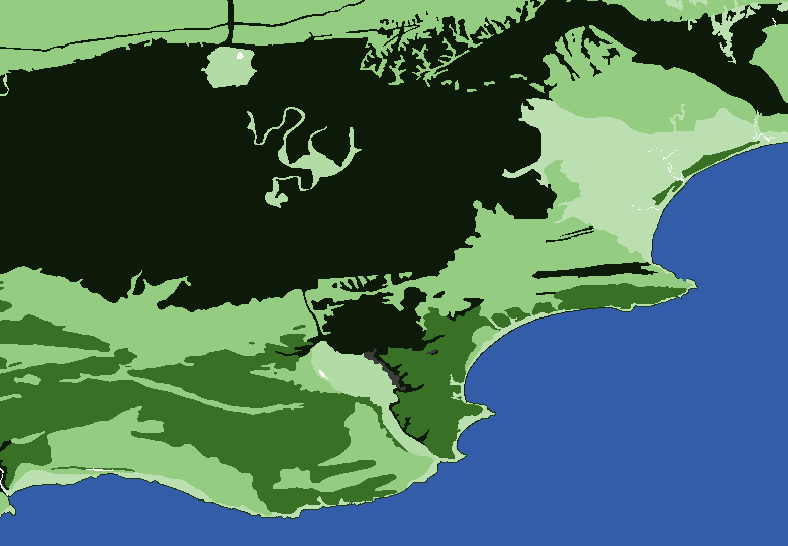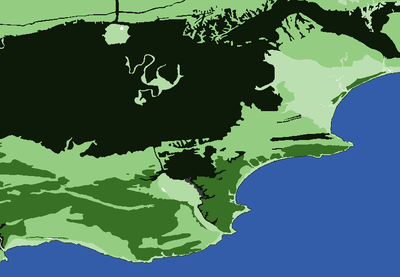An agent-based approach to weighted decision making in the spatially and temporally variable South African Paleoscape 1.0.0
Even a simple human foraging system has a large number of moving parts. Foragers require a complex decision making process to effectively exploit the spatially and temporally variable resources in an environment. Here we present an agent-based modelling framework, based in optimal foraging theory, for agent foragers to make mobility and foraging decisions by weighing expected caloric returns against geographic and social factors, and forecasted future return rates.
We apply our Paleoscape model to a spatially explicit South African coastal landscape to better understand the human foraging system of the Middle Stone Age when foragers began systematically exploiting a wide variety of flora and fauna in both terrestrial and inter-tidal environments. We also discuss the broader importance of agent-based models of foraging systems for a wide variety of archaeological research questions.

